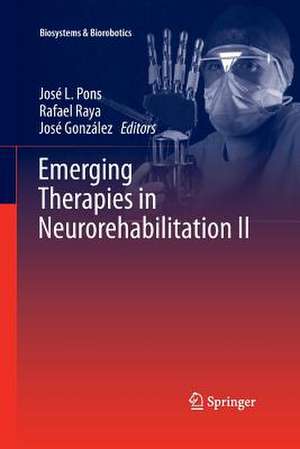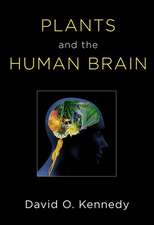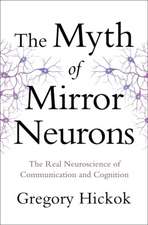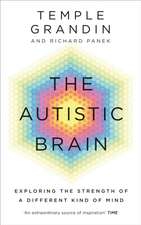Emerging Therapies in Neurorehabilitation II: Biosystems & Biorobotics, cartea 10
Editat de José L. Pons, Rafael Raya, José Gonzálezen Limba Engleză Paperback – 23 aug 2016
| Toate formatele și edițiile | Preț | Express |
|---|---|---|
| Paperback (1) | 717.37 lei 6-8 săpt. | |
| Springer International Publishing – 23 aug 2016 | 717.37 lei 6-8 săpt. | |
| Hardback (1) | 724.29 lei 6-8 săpt. | |
| Springer International Publishing – 12 noi 2015 | 724.29 lei 6-8 săpt. |
Din seria Biosystems & Biorobotics
-
 Preț: 124.32 lei
Preț: 124.32 lei - 5%
 Preț: 2086.52 lei
Preț: 2086.52 lei - 5%
 Preț: 724.29 lei
Preț: 724.29 lei - 5%
 Preț: 738.41 lei
Preț: 738.41 lei - 5%
 Preț: 715.55 lei
Preț: 715.55 lei - 5%
 Preț: 406.56 lei
Preț: 406.56 lei - 15%
 Preț: 642.18 lei
Preț: 642.18 lei - 5%
 Preț: 3238.02 lei
Preț: 3238.02 lei - 5%
 Preț: 1110.52 lei
Preț: 1110.52 lei - 5%
 Preț: 1407.51 lei
Preț: 1407.51 lei - 5%
 Preț: 841.53 lei
Preț: 841.53 lei - 5%
 Preț: 1304.55 lei
Preț: 1304.55 lei - 15%
 Preț: 635.96 lei
Preț: 635.96 lei - 5%
 Preț: 1431.66 lei
Preț: 1431.66 lei - 20%
 Preț: 652.73 lei
Preț: 652.73 lei - 18%
 Preț: 1212.84 lei
Preț: 1212.84 lei - 5%
 Preț: 708.23 lei
Preț: 708.23 lei - 5%
 Preț: 1936.01 lei
Preț: 1936.01 lei - 5%
 Preț: 2899.14 lei
Preț: 2899.14 lei - 5%
 Preț: 1092.79 lei
Preț: 1092.79 lei - 5%
 Preț: 713.54 lei
Preț: 713.54 lei - 18%
 Preț: 1215.53 lei
Preț: 1215.53 lei - 5%
 Preț: 725.42 lei
Preț: 725.42 lei - 5%
 Preț: 722.12 lei
Preț: 722.12 lei - 5%
 Preț: 710.79 lei
Preț: 710.79 lei - 5%
 Preț: 2145.17 lei
Preț: 2145.17 lei
Preț: 717.37 lei
Preț vechi: 755.13 lei
-5% Nou
Puncte Express: 1076
Preț estimativ în valută:
137.28€ • 142.51$ • 114.47£
137.28€ • 142.51$ • 114.47£
Carte tipărită la comandă
Livrare economică 25 martie-08 aprilie
Preluare comenzi: 021 569.72.76
Specificații
ISBN-13: 9783319368221
ISBN-10: 3319368222
Pagini: 318
Ilustrații: VI, 318 p. 55 illus., 36 illus. in color.
Dimensiuni: 155 x 235 mm
Greutate: 0.46 kg
Ediția:Softcover reprint of the original 1st ed. 2016
Editura: Springer International Publishing
Colecția Springer
Seria Biosystems & Biorobotics
Locul publicării:Cham, Switzerland
ISBN-10: 3319368222
Pagini: 318
Ilustrații: VI, 318 p. 55 illus., 36 illus. in color.
Dimensiuni: 155 x 235 mm
Greutate: 0.46 kg
Ediția:Softcover reprint of the original 1st ed. 2016
Editura: Springer International Publishing
Colecția Springer
Seria Biosystems & Biorobotics
Locul publicării:Cham, Switzerland
Cuprins
Challenges in Neurorehabilitation and Neural Engineering.- Rehabilitation Technologies Applications in Stroke and Traumatic Brain Injury Patients.- Rehabilitation Technologies for Spinal Injury.- Rehabilitation Technologies for Cerebral Palsy.- Neural and Musculoskeletal Modeling: its Role in Neurorehabilitation.- Spinal Cord plasticity and Neuromodulation After SCI.- BCI Applied to Neurorehabilitation.- Robot-Assisted Rehabilitation Therapy: Recovery Mechanisms and their Implications for Machine Design.- Motor Control and Learning Theories.- Muscle Synergies in Clinical Practice: Theoretical and Practical Implications.- Workshop on Transcutaneous Functional Electrical Stimulation.- Virtual Rehabilitation.
Textul de pe ultima copertă
This book reports on the latest technological and clinical advances in the field of neurorehabilitation. It is, however, much more than a conventional survey of the state-of-the-art in neurorehabilitation technologies and therapies. It was written on the basis of a week of lively discussions between PhD students and leading research experts during the Summer School on Neurorehabilitation (SSNR2014), held September 15-19 in Baiona, Spain. Its unconventional format makes it a perfect guide for all PhD students, researchers and professionals interested in gaining a multidisciplinary perspective on current and future neurorehabilitation scenarios. The book addresses various aspects of neurorehabilitation research and practice, including a selection of common impairments affecting CNS function, such as stroke and spinal cord injury, as well as cutting-edge rehabilitation and diagnostics technologies, including robotics, neuroprosthetics, brain-machine interfaces and neuromodulation.
Caracteristici
Comprehensive, up-to-date and practice-oriented guide to neurorehabilitation technologies and therapies Reports on methods and techniques that will shape the future of technology-based clinical practice Bridges the gap between clinical and technical perspectives Gives important insights into the mechanisms of human motor control and learning













